Giacomo D'Andrea, "Reimagining the Voids"
In Drawing and Representation 2, students learn visual communication techniques by studying and drawing the city of Toronto at neighbourhood scale. Giacomo's site was an area on the western edge of Toronto's Beaches neighbourhood.
He began by mapping all of the area's open spaces. In doing so, he noticed that many of them were clustered around the intersection of Queen Street East and Kingston Road, the neighbourhood's two main commercial strips. "I modelled the intersection and I found out that the convergence of these two roads created these unusual block typologies," he says. "They're irregular, not rectangular. And in these block typologies I realized that there were spaces in between that were devoid and neglected, not really developed."
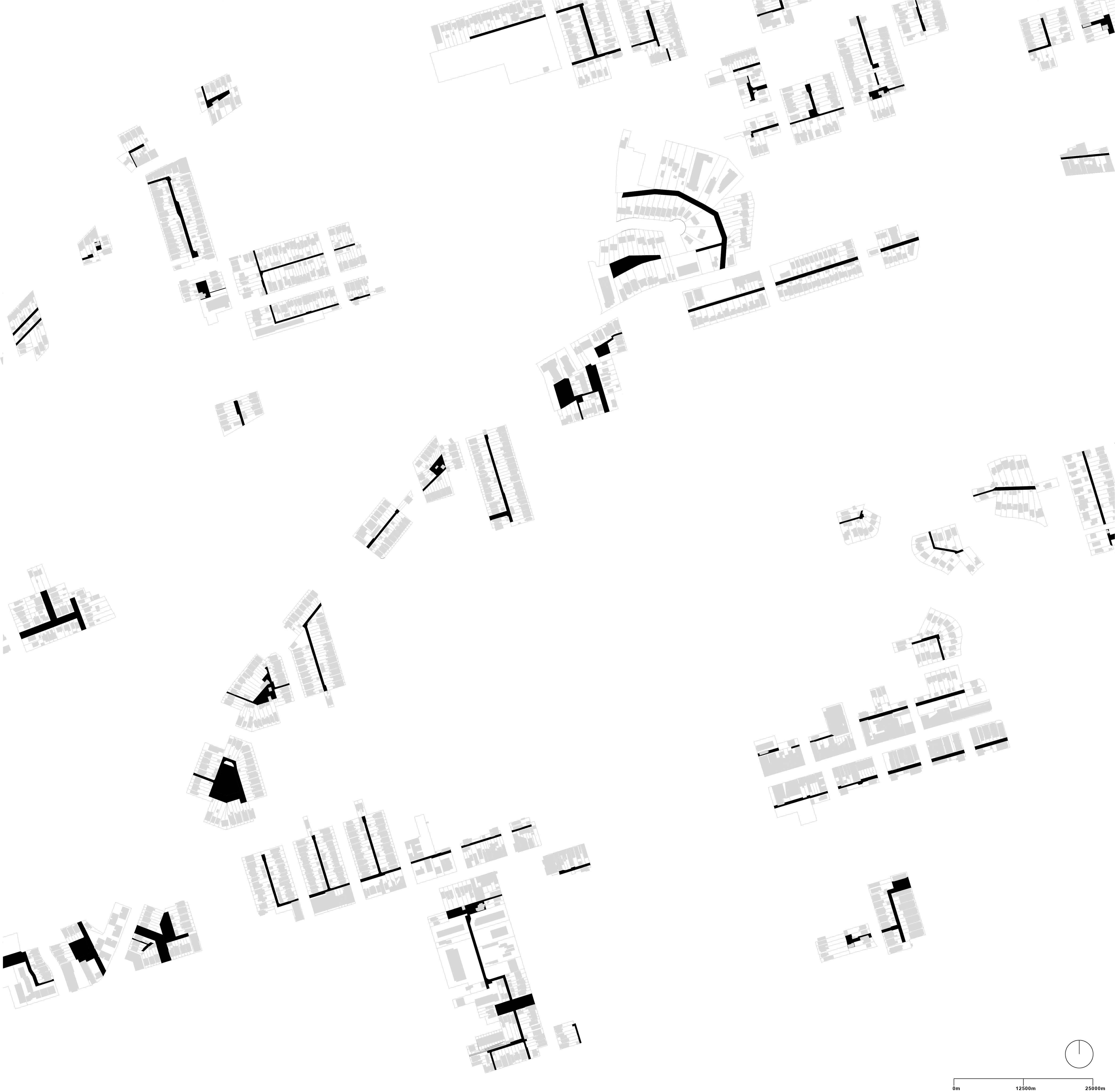
Giacomo began by isolating oddly shaped in-between spaces.
These in-between spaces were mostly laneways and backyards. Giacomo visited the site to gain a better sense of their purpose within the existing urban fabric. He found that many of them were being used for parking, or for storage of things like garbage bins.
As a next step, he divided the internal spaces into three broad categories: spaces behind commercial structures, spaces behind residential structures, and spaces that were being used for some sort of creative community purpose, like gardening.
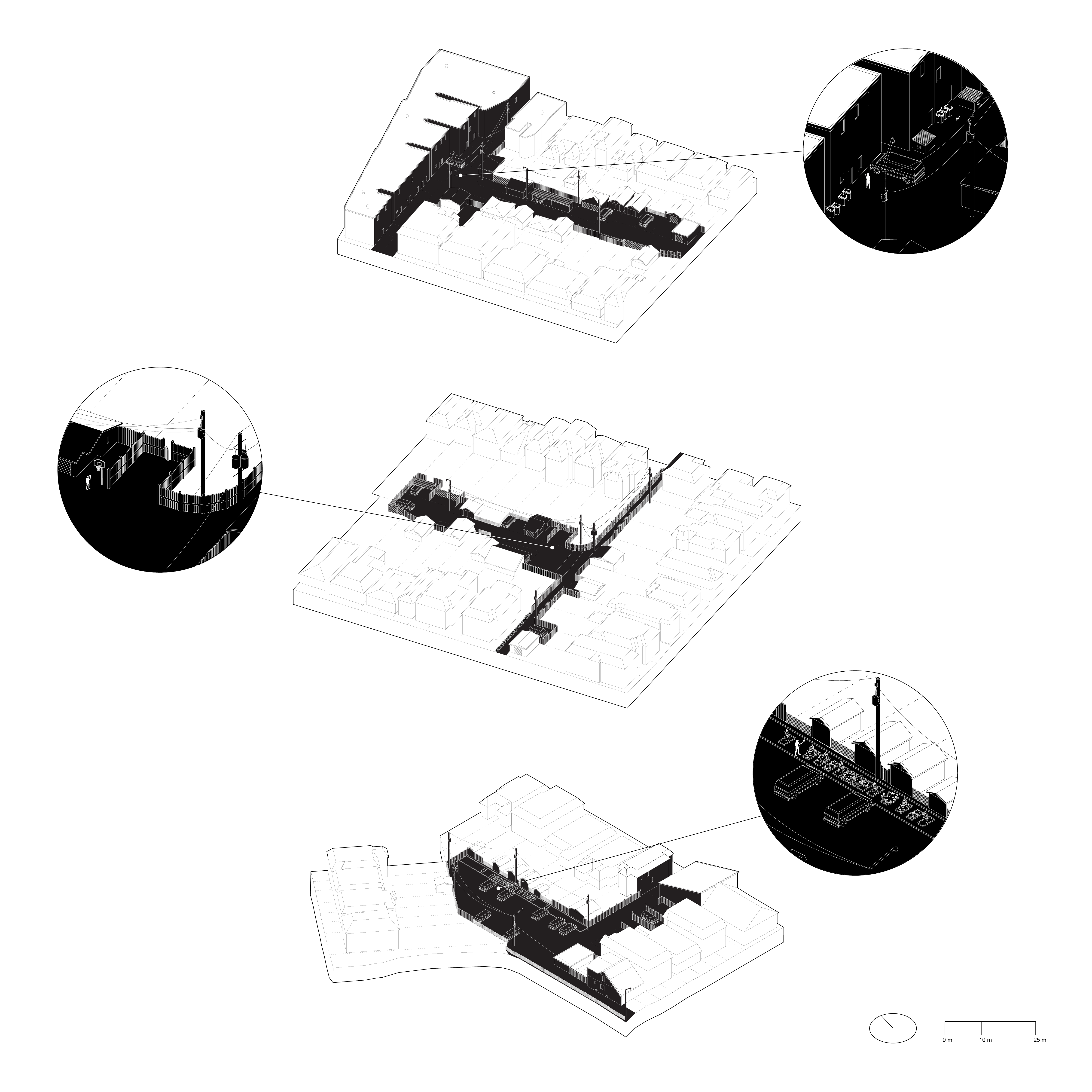
Giacomo's three types of internal spaces.
Finally, Giacomo used his observations as the basis for a proposal. He created a suite of design tools that could be used to transform the neighbourhood's in-between spaces into a continuous network of community amenities. "For my proposal, I wanted to imagine how these spaces and uses could be developed further, and how they could improve on their existing uses," he says.
The spaces near the commercial strips would be transformed into back-alley shopping districts, with storefronts where local entrepreneurs could set up small retail businesses or restaurants.
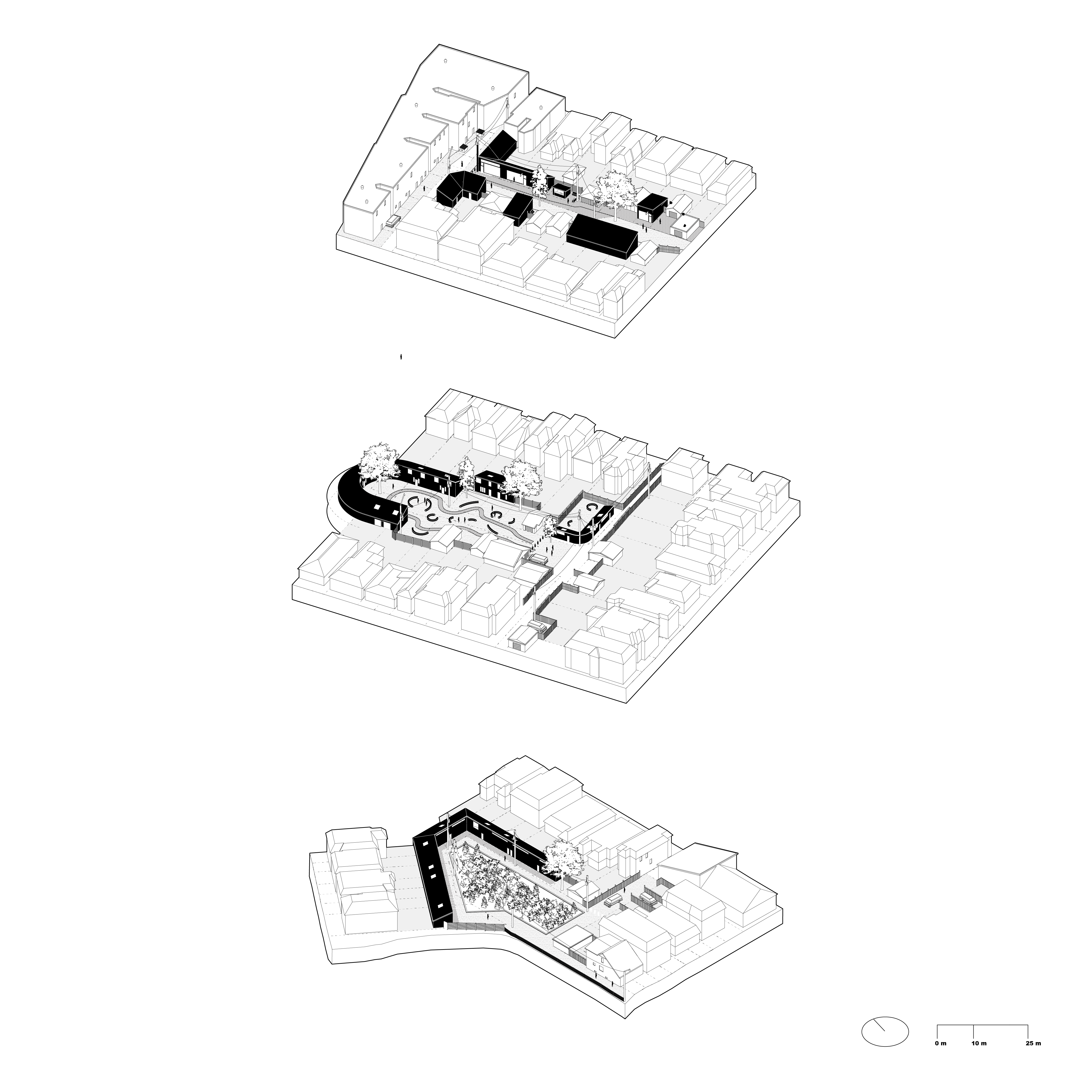
Drawings showing Giacomo's proposed interventions.
In residential areas, laneways would be transformed into housing. New residential structures would hug the lot lines, creating an intimate, courtyard-like atmosphere and preserving some privacy for local residents whose backyards face the new development. The areas would be outfitted with benches and other amenities to encourage locals to linger.
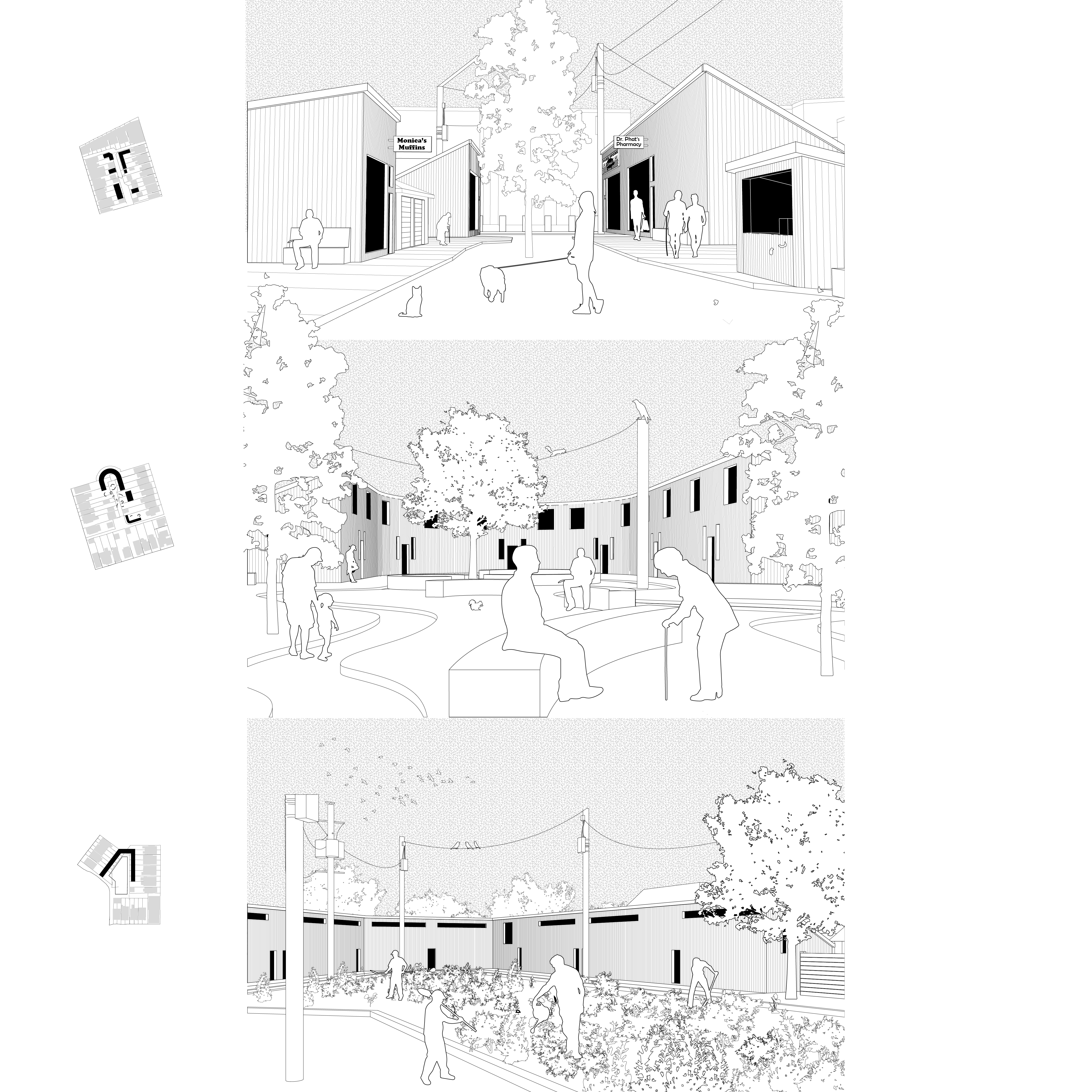
Perspective views of Giacomo's interventions.
Giacomo also envisioned some of the neighbourhood's in-between areas being transformed into community gardens, with borders adapted to the unique curves of each individual space.
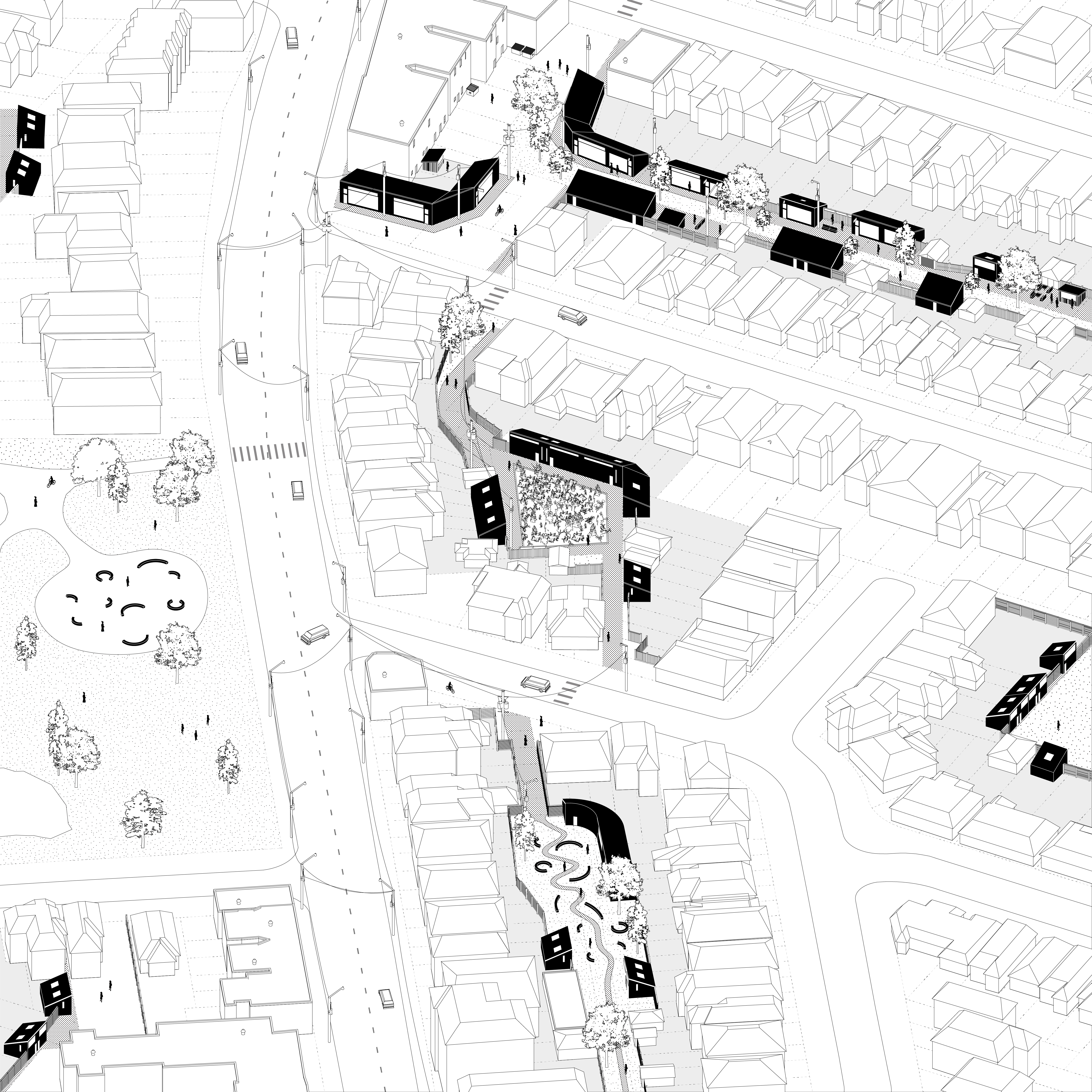
A drawing of a pedestrian pathway linking several in-between areas.
All of the new additions would be linked by a set of pedestrian pathways, creating an entirely new — and very pleasant — way of getting around the neighbourhood.

